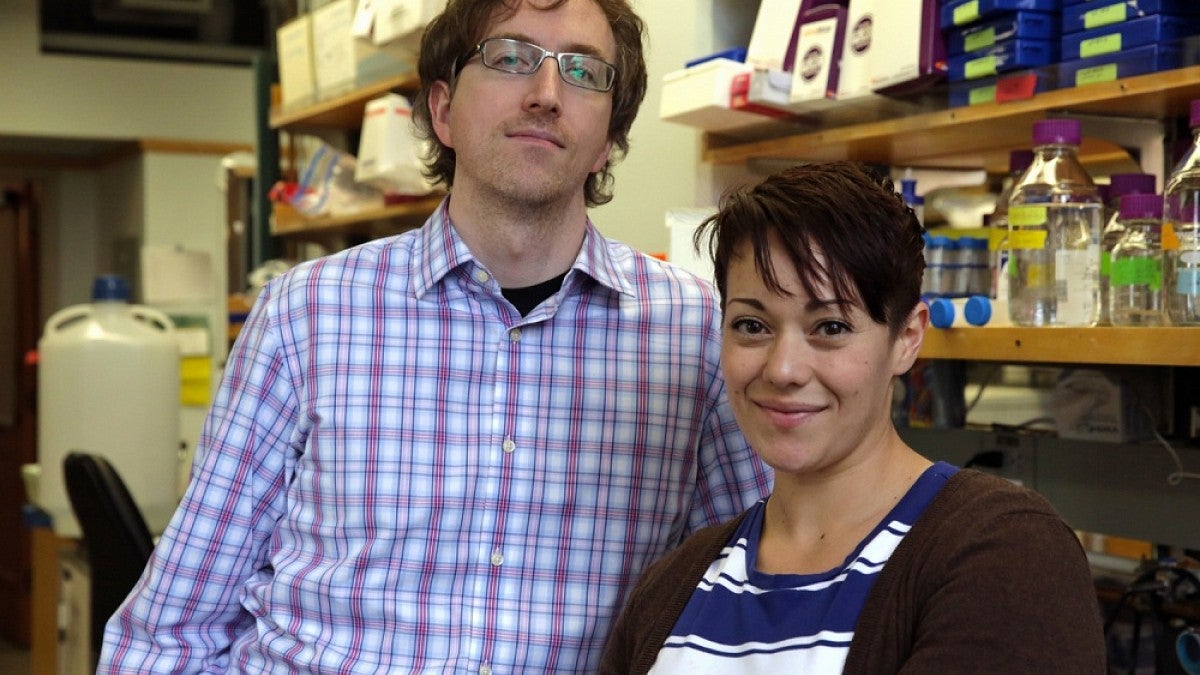With each beat of your heart, four valves work to keep blood flowing properly. When one fails to open or close on schedule, heart valve disease can emerge. Some 5 million Americans are affected each year, and roughly 5 percent of the human population is born with abnormal heart valves.
At the UO, researchers in the lab of biologist Kryn Stankunas have been looking at what goes on long before heart valve diseases begin. In a paper published in the March 15 issue of the journal Development, they reported their development of an approach that should help to understand how heart valves develop in the first place and eventually point to new diagnostic tools.
To do so, the research team explored how a cell-to-cell signaling pathway in mice ensures that valve development unfolds in a coordinated manner. For the project, the researchers created a line of genetically engineered mice, allowing them to manipulate the activity in what is known medically as the Wnt/Beta-catenin signaling pathway.
Understanding normal development is the first step toward figuring out what goes wrong in disease, said Stankunas, an assistant professor in the Department of Biology and a member of the Institute of Molecular Biology.
“Congenital heart valve defects are extremely common and can have considerable negative effects on human health, but their root causes are poorly understood,” he said. “We wanted to first study how a valve develops normally with a focus on discovering how this one essential signaling pathway functions during different stages of valve development.”
Valve defects can be passed down within families. Because valve development is a multistage process involving several cell types, researchers have had difficulty determining exactly when and where valve formation genes normally function during embryonic development.
“This signaling pathway has so many developmental roles that if we inhibit it globally, we might see secondary defects that are not actually due to its role in the valves,” said Fernanda Bosada, lead author on the paper and a biology doctoral student in the Stankunas lab. “Our transgenic method gives us precise control over this particular signaling process.”
Although this signaling pathway has been suspected of having key roles in heart valve formation, the new research reveals more of its contributions. The study, for example, refutes a long-held model in which the pathway was believed to directly trigger generation of the first cells that make up heart valves. Instead, the pathway enables transitions between the various stages of valve development.
The signaling process, Stankunas said, is all about timing. As valves form, the signaling is essentially programmed to turn on automatically and support cell growth. As enough cells accumulate, the pathway turns itself off and valves stop expanding, thereby controlling valve size.
As the process is more fully understood, Stankunas said, it could point to improved diagnostics for congenital valve defects and possibly to ways to generate heart valve replacement tissue for therapeutic use in humans.
“That’s a long-term goal,” he said. “We first need to be inspired by learning how nature forms a valve normally to rationally design such regenerative medicine approaches.”
Co-authors on the paper with Bosada and Stankunas were Vidusha Devasthali, now the UO’s assistant director of Research Development Services, and doctoral student Kimberly Jones. The National Institutes of Health and March of Dimes supported the project.
—By Lewis Taylor, Office of Research and Innovation


